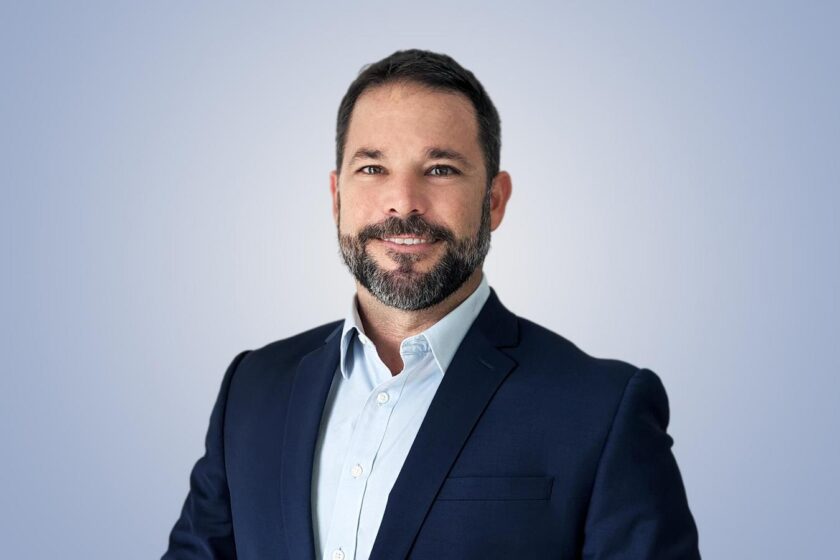News & Insights
Navigating complexity: asset management for federal agencies
Explore enhanced asset management practices for federal agencies with strategic solutions, including alternative funding sources.

Federal agencies are grappling with the critical issue of aging infrastructure. Many of these agencies oversee outdated and deteriorating assets that are plagued by a significant backlog of maintenance and repair requirements. This backlog not only compromises the reliability and performance of these assets but also poses a direct threat to mission readiness. As infrastructure continues to age, the frequency and severity of breakdowns increase, leading to more frequent disruptions and higher maintenance costs.
This article shares best practices for comprehensive asset management along with leveraging strategic partnerships for alternative funding sources.
Why comprehensive asset management matters
The persistent issue—when it comes to asset management—is limited resources and funding. For years, federal agencies have struggled with budget constraints in operations and maintenance (O&M) and sustainment, restoration, and modernization (SRM) funding. These financial limitations severely restrict the ability to invest in necessary modernization efforts and the effective management and maintenance of assets. Without adequate funding, agencies find it challenging to address the growing maintenance backlog, further exacerbating the condition of their infrastructure.
The challenges extend beyond physical deterioration and financial constraints. Many federal agencies lack a complete and accurate picture of their overall assets due to outdated legacy systems. This incomplete asset visibility hampers their ability to make informed decisions and prioritize maintenance activities effectively. Additionally, the inability to meet evolving compliance and regulatory requirements adds another layer of complexity to the already daunting task of asset management.
The opportunities of working an economy of scale
When managing millions of square feet of facilities, it’s easy to fall into the habit of addressing only the most immediate issues. But that approach misses the opportunities that economies of scale provide. In other words, big problems can also make way for big solutions. The untapped potential lies in the savings that strategic asset management makes possible.
Start with a comprehensive asset inventory
Effective asset management begins with an up-to-date inventory of all assets, including thorough facility condition assessments. This inventory provides a clear picture of what you have and what is needed. While all buildings and equipment have a lifecycle, strategic capital investments can extend that lifecycle, maximizing the value of existing assets.
Key questions facility condition assessments can answer include:
- What equipment and assets do we own, how long are they expected to last, and what will it cost to maintain and replace them in the future?
- What is the current condition of our assets and infrastructure (e.g., buildings, roads, parking lots, pipes, pumps, AC units, electrical equipment), and what re-investments are required?
- Where are we spending money on systems that need to be replaced?
By prioritizing limited funding based on data-driven insights, agencies can make informed decisions about whether to renovate, expand, or replace facilities. This approach not only addresses immediate needs but also helps plan for future sustainability by understanding maintenance responsibilities and anticipating long-term costs.
Once the challenges are identified, the next step is to zoom out and find the connections that amplify efficiency and impact.
Find the creative overlaps
When managing extensive facilities and assets, finding efficiencies and optimization opportunities can be a complex task. A partner like Salas O’Brien can work across the entire portfolio to identify potential efficiency upgrades, bulk procurement options, optimized scheduling, opportunities to extend asset lifespan, improved funding opportunities, and strategic capital decisions such as retention or disposal.
Key questions to consider in this phase include:
- What are the critical assets that, if failed, would have the most significant impact on mission readiness?
- What has changed over time that makes some facilities or systems currently being maintained obsolete?
- How can a limited budget be prioritized to optimize assets for the future?
- What are the long-term costs associated with keeping facilities operational, and what could change the game?
- What sustainable upgrades or alternatives can be implemented to save energy and natural resources in daily operations?
- What are the risks associated with underfunding or ignoring facility or equipment issues?
By working holistically, federal agencies can identify creative opportunities for improvements with cost reductions that go beyond immediate repairs.
Leveraging technology to maintain strategic asset management
The field is evolving into digital tools that support reliability-centered maintenance, preventative strategies, that consider total cost of ownership resulting in informed decisions on maintenance cadence to extend life or, when appropriate, allowing equipment to reach end-of-life for replacement.
While a spreadsheet might suffice for smaller operations, large-scale asset management requires robust software solutions. Systems like BUILDER™ Sustainment Management System (SMS), a cloud-based software system developed by the US Army Corps of Engineers to help with facilities management (soon to be replaced by Enterprise Sustainment Management System (ESMS)), offer powerful predictive analytics capabilities. These tools can forecast funding needs, predict failures, and model various scenarios based on different funding levels.
Emerging technologies are also making waves. AI, digital twins, 360-degree modeling, and thermographic scanning are opening new possibilities for in-depth analysis and proactive management.
In a landscape where many asset management solutions are tied to specific software, it’s important to choose tools and approaches that are best suited to your agency’s unique needs (and solutions are not driven by incentives for a vendor). Consultants—like Salas O’Brien—can help guide how to leverage these technologies to get the best ongoing support for asset management.
Big wins in asset management: strategic partnerships through EUL and IGSA
Strategic partnerships are changing the landscape of comprehensive asset management. Enhanced use leases (EUL) and intergovernmental support agreements (IGSA) are two key frameworks facilitating these partnerships. EUL allows federal agencies to lease underutilized property to private entities, generating in-kind services that can be reinvested in mission-critical infrastructure. Meanwhile, IGSA enables federal installations to partner with local governments for the provision of services at reduced costs, leveraging local expertise and economies of scale. These collaborative models not only address budgetary constraints but also foster innovation and community engagement, ultimately strengthening mission readiness and sustainability.
Tangible results for the US Department of Defense
The US Department of Defense is a prime example of how strategic partnerships can transform asset management. Salas O’Brien has facilitated several key partnership engagements:
Army: Across 85 Army installations, we executed 173 IGSAs, resulting in $96.4M in annual savings and $43.9M in cost avoidance.
Navy: For 15 Navy installations on behalf of Navy Regions Mid-Atlantic and Southeast, we executed 16 IGSAs, achieving $10M in annual cost savings.
Air Force: We successfully managed SAF/IE nationwide delivery of the USAF Community Partnership (AFCP) and Mission Sustainment programs, collaborating with USAF Communities to create innovative partnerships addressing unfunded operational and infrastructure requirements.
Here are some of the positive impacts on asset management for the US Department of Defense:
Upgrades to electrical infrastructure at US Naval Air Station Oceana. By leveraging available land, we developed a lease agreement allowing Dominion Energy to utilize 20 acres for a new switching station supporting the Coastal Virginia Offshore Wind project. This in-kind exchange facilitates renewable energy for the region and much-needed infrastructure upgrades for the military installation.
Expansion of C130 facility at US Marine Corps Air Station Cherry Point. An EUL and IGSA established with the state of North Carolina are enhancing workforce development and infrastructure. The Salas O’Brien-led team developed the project through three (3) distinct processes, including a Feasibility and Business Case Analysis, Strategic Communication Plan Course of Action Analysis, and Transactional Support Services. Development of a new 700k square foot facility owned by the State of North Carolina and leased by the Navy under 10 U.S. Code § 2661 that will allow for securitization of the site and FRC East occupation of the MRO facility. Securing $440 million in public and private capital for design and construction.
Climate resiliency support for military installations in the southeastern US. A significant IGSA between the US Army and the University of Georgia leverages the university’s environmental studies programs. Students gain real-world experience through natural resource planning, environmental studies, and forest monitoring, resulting in valuable student experiences and reduced costs for the US Army.
As federal agencies continue to face budgetary constraints, these collaborative approaches offer a viable path forward to generate significant cost savings and improve the sustainability and readiness of mission-critical infrastructure.
How Salas O’Brien can help federal agencies with asset management
Salas O’Brien is deeply experienced in helping federal agencies with facility condition assessments, lifecycle asset management, cost efficiency strategies, and risk management. We also have a long list of successes in facilitating EULs, IGSAs, and non-FAR procurement.
Most of our clients simply call us up and tell us what they are dealing with. We can help you move through the complexity and get a plan of action in place. Simply reach out to one of our contributors below.

John Broughton
John Broughton has over 20 years’ experience leading complex DOD and other federal agency public-private and public-public partnerships (P3/P4) programs that provide program management experience across various disciplines ranging from facilities to utilities infrastructure, real estate recapitalization, modernization, and disposition as well as monetizing underutilized real property through grants, land exchanges, joint-use development, and privatization. He holds a Bachelor of Science in Environmental Science from the University of Vermont. John serves as a Vice President at Salas O’Brien. Contact him at [email protected].

John Carroll, PE
John Carroll is an expert in capital asset management systems that provide facility and systems O&M engineering, condition assessments, sustainability and commissioning services, reliability-centered maintenance, capital asset management, and planning services. He holds a Bachelor of Science in Civil Engineering from the University of Central Florida. John serves as a Senior Vice President at Salas O’Brien. Contact him at [email protected].